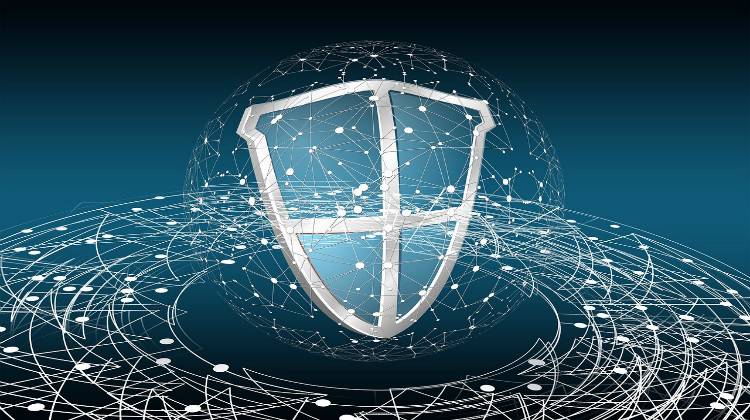If you haven’t been on the wrong end of a malware attack, the scary truth is that is could only be a matter of time. Millions of people fall foul to cyberattacks from different types of malware each year. The number of high-profile cases that cost billions to put right continues to grow – the NHS, Uber and Under Armour being among those hit by recent data breaches.
Whether it’s hidden in an innocent-looking email chain or comes bundled in with a free download from the web, malware can do serious damage. So what do you need to know?
What is malware?
Malware is the umbrella term for malicious software. There are a few different software variants which fit under this term, including spyware, viruses and ransomware. The purpose of malware is pretty clear – invade a system, cause damage and disruption, or steal data.
Where does malware come from?
Malware doesn’t come about by accident. It’s typically made by cybercriminals; hackers looking to make money from you by spreading malware themselves or selling it off to the highest bidder.
How does malware end up on your device?
Malware doesn’t end up on your computer or device by accident either – it can’t break down the door by itself, you have to let it in. There are a couple of main ways malware can worm its way into your systems, including:
- Clicking a link in a malicious email
- Clicking a link from a malicious pop-up disguised as something else
- Downloading content illegally from peer-to-peer sharing services
- Browsing hacked websites
At work, your main culprit is likely to be phishing emails. In fact, telecoms company Verizon reported that malware arrived on computers via email in 94% of cases in 2019.
Different types of malware
There’s an ever-growing number of malware strands out there, but they fall into categories. If you can spot different types of malware, there’s more you can do to protect against them.
Viruses
A virus attaches itself to a clean program or file. When the program is executed, it can then start to spread uncontrollably, infecting other programs and deleting or corrupting files as it goes. One tip for spotting a virus is to look out for rogue .exe files on your system.
Worms
Worms can cause similar levels of damage to viruses, they just spread differently. While a virus can replicate itself uncontrollably, worms start from one infected machine and work their way through a network, one machine at a time. Worms can hijack regular file-sharing routes between devices to quickly infect a whole network either locally or via the internet.
Trojans
A Trojan is one of the most dangerous pieces of malware out there. Just like the Greek soldiers did, a Trojan horse hides or presents itself as something useful to deceive you. Once you let it in (e.g. clicking a link in a helpful-looking email attachment) the Trojan can wreak all kinds of havoc – breach your security systems, steal your account details and give remote users access to your systems, often all under the radar of antivirus software.
Spyware
While some malware is made to destroy everything it touches, spyware is there to steal from you instead. As the name suggests, spyware hides in the background of your computer and collects sensitive information, such as passwords and payment details, without you knowing.
Ransomware
While spyware tries to hide away in the background without you noticing, ransomware is the opposite. Ransomware will pop up, announce that it has your sensitive data, and demand you pay a ransom fee before it will allow you access to your files again. As it’s nasty and hard to defend against, ransomware is often a cybercriminal’s weapon of choice.
How can you spot malware?
There are a number of warning signs that hint at malware infection, so watch out for:
- Your computer performance dropping or noticeably slowing down
- Your computer repeatedly crashing, freezing or experiencing ‘fatal errors’
- Unexpected pop-up ads displaying all over your screen
- A sudden and mysterious drop in available disk space on your hard drive
- Strange files saved in unexpected places on your machine
How can you protect against malware?
Prevention is better than cure when it comes to malware. The easiest way to defend your systems from malware is to stop it from accessing them in the first place. There are two main ways to approach this: protective tools, and making users more vigilant.
Protective measures
For the best chance at preventing malware attacks, implement protective measures.
- Make sure all operating systems, browsers and plugins are up to date. Get automatic updates going on all machines used by employees if you can.
- Upgrade to a robust anti-malware program if you don’t already have one.
- Force employees to regularly update their passwords with strong passwords – those with numbers, upper and lower-case letters and spaces or symbols are best.
- Encrypt as much sensitive data as you can so it’s useless to hackers even if they do manage to get their hands on it.
Employee training measures
If you can, provide cybersecurity training to all staff to help them understand the importance of keeping themselves and their data safe. Training should cover being cautious when approaching emails from unknown senders, double-checking files are only downloaded from safe sources and avoiding clicking on pop-up ads when browsing the internet.
Above all, remember that it’s best to proactively defend against malware attacks than try to mitigate the damage done afterwards.
Computers in the City, your IT partner
Computers in the City is London’s longest-standing IT partner. With over 20 years’ experience, we can assist you to meet your IT support, consulting and cloud computing needs. We’re proud to be local, offering 24-hour support in straightforward language that takes the stress out of IT support.


